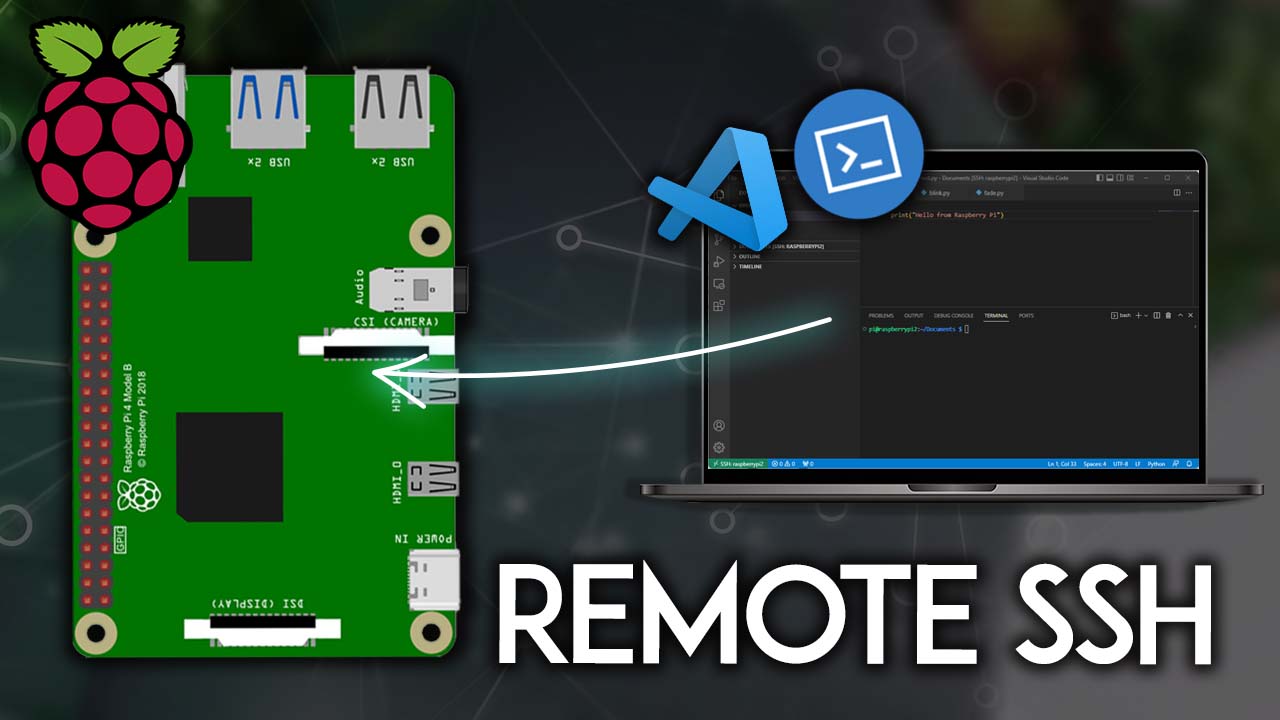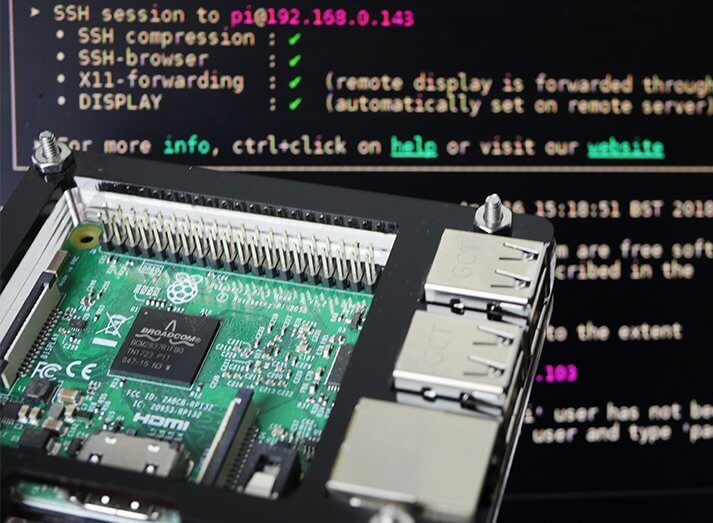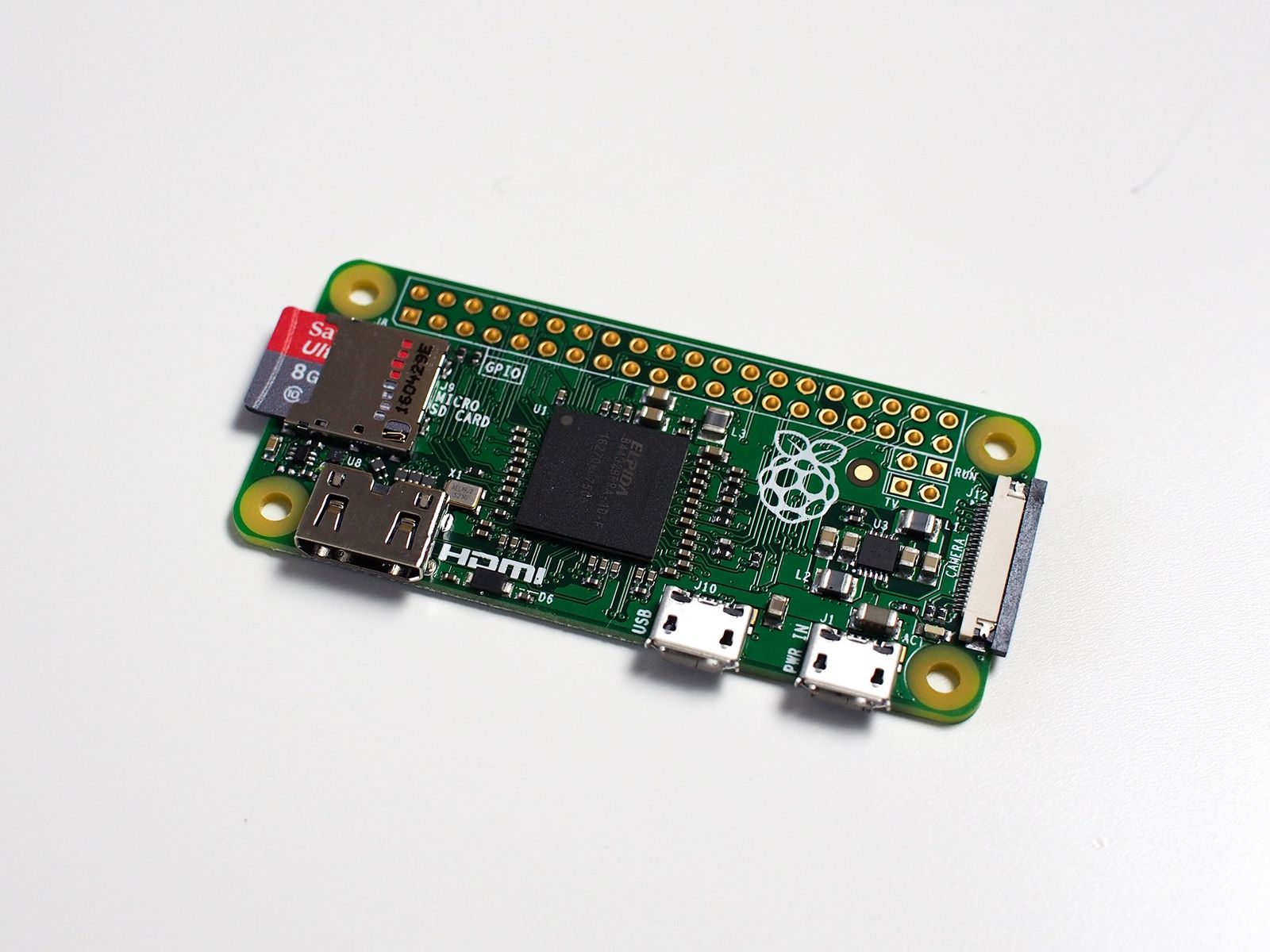Secure Your Raspberry Pi: Free SSH Downloads For Remote IoT Control
Are you looking to take charge of your Raspberry Pi projects from anywhere? Maybe you've got a smart home setup, a little weather station, or perhaps some other cool device running on a Pi, and you want to check on it or tweak things without being right there. Well, getting your Raspberry Pi to talk to you securely over a distance is a very useful thing, and that's where SSH, or Secure Shell, comes into the picture. It's a way to manage your tiny computer from afar, and it makes remote IoT control a real possibility for everyone.
SSH is, you know, a software package that helps with safe system management and moving files across networks that might not be so secure. It's something pretty much every big data center and large business uses, so it's a proven method for keeping things safe. Learning how to use SSH commands, figuring out the different options, and setting them up in Linux or Unix systems is a skill that really pays off, especially for your Raspberry Pi.
This article will show you how to get started with ssh remoteiot raspberry pi free download options, making your projects more accessible and secure. We'll cover what SSH is, how to set it up on your Pi, and even touch on some common snags you might hit and how to get past them. So, if you're keen to control your Raspberry Pi-powered gadgets from a distance, you're in the right spot, and we'll help you get there.
Table of Contents
- What is SSH and Why Your Raspberry Pi Needs It?
- Getting Started: Free SSH for Your Raspberry Pi
- Connecting to Your Pi: Essential SSH Tools
- Keeping Things Safe: SSH Security Best Practices
- Common Challenges and Solutions with SSH on Raspberry Pi
- Beyond Basics: Advanced SSH Tricks for Your IoT Projects
- Making Your IoT Project Sing with Remote Control
- Frequently Asked Questions (FAQs)
- The Path Forward: Your Raspberry Pi and SSH
What is SSH and Why Your Raspberry Pi Needs It?
The SSH protocol, sometimes called Secure Shell, is a way for one computer to log into another securely from a distance. It's like having a direct, private line to your Raspberry Pi, no matter where you are. This protocol offers several ways to make sure you're really you, with strong authentication methods. It's actually based on a free version first made by Tatu Ylonen and then built upon by the OpenBSD project, so it has a pretty solid background.
Your Raspberry Pi, especially when it's part of an IoT setup, often sits in a spot where you can't easily plug in a keyboard and screen. Maybe it's tucked away in a smart garden, or perhaps it's monitoring something in another room. This is where SSH truly shines. It lets you send commands, move files, and even get a graphical display from your Pi right to your main computer. This means you can update software, check sensor readings, or restart a service without ever touching the tiny device itself, which is pretty handy, you know.
The core benefit, arguably, is the security it brings. When you're dealing with remote IoT devices, security is a big deal. Sending data or commands over an unprotected network could leave your projects open to all sorts of bad things. SSH encrypts all that communication, keeping your data private and safe from prying eyes. It's a fundamental tool for anyone serious about managing their Raspberry Pi remotely, especially for IoT applications.
Getting Started: Free SSH for Your Raspberry Pi
Setting up SSH on your Raspberry Pi is actually quite straightforward, which is good news. Most Raspberry Pi operating systems, like Raspberry Pi OS, come with the SSH server software already available. You just need to turn it on. This means you don't typically need a separate "ssh remoteiot raspberry pi free download" in the traditional sense, as the capability is built right into the system you're probably already using.
To enable SSH, you can do it through the Raspberry Pi configuration tool, which is a graphical interface if you have a screen connected. Or, you can do it from the command line, which is often quicker. A common way is to create an empty file named `ssh` (no extension) in the boot partition of your SD card before you even put it into the Pi. When the Pi starts up, it sees that file and automatically enables the SSH server. It's a neat trick, actually.
Once SSH is enabled, your Raspberry Pi is ready to accept remote connections. You'll need to know its IP address on your local network, which you can find with a simple command like `hostname -I` on the Pi itself. This IP address is, you know, your Pi's unique address on the network, and you'll use it to tell your main computer where to connect. It's the first step in truly embracing remote IoT control for your projects.
Connecting to Your Pi: Essential SSH Tools
With SSH enabled on your Raspberry Pi, the next step is to connect to it from another computer. The tool you use depends on what operating system your main computer runs. For folks using Windows, PuTTY is a very popular and free SSH and Telnet client. You can usually download the latest version from its official website, and it comes with instructions for installation and setting up SSH keys, which we'll talk about a bit later.
If you're using a computer with Linux or macOS, you're in luck, because SSH is typically built right into the terminal. You don't need to download anything extra. You just open your terminal application and type a simple command: `ssh pi@your_pi_ip_address`. Replace `your_pi_ip_address` with the actual IP address of your Raspberry Pi, of course. The `pi` part is the default username for Raspberry Pi OS, so that's usually what you'll use.
When you connect for the very first time, your computer might ask you to confirm the Raspberry Pi's host key. Every host has a key, and clients remember the host key tied to a specific host. This is a security measure to make sure you're connecting to the right device and not, you know, some imposter. Just type 'yes' to confirm, and then you'll be prompted for the password for the `pi` user. After that, you're in! You'll see the command prompt of your Raspberry Pi right there on your main computer screen, ready for you to send commands.
Keeping Things Safe: SSH Security Best Practices
While SSH makes remote access super convenient, it's also about keeping things secure. The secure shell protocol is widely used, and it's important to know how to stay safe. One of the best things you can do is move away from password-based logins and use SSH key pairs instead. This is a much stronger way to prove who you are. You generate a pair of keys: a public key that goes on your Raspberry Pi, and a private key that stays on your local computer. This private key is like a super secret digital fingerprint, and it never leaves your machine.
Another smart move is to change the default SSH port (which is 22). Attackers often scan for devices listening on this common port. By changing it to something less obvious, you make your Raspberry Pi a bit harder to find for automated attacks. It's not a foolproof solution, but it adds another layer of defense. Also, consider disabling password authentication entirely once you have key-based authentication working. This means only someone with your private key can log in, which is a very secure setup.
It's also worth remembering that the world of cybersecurity is always changing. Suvi Lampila, an SSH fellow, points out that "AI enables attackers to move horizontally within systems in seconds—turning a single crack into complete control almost instantly." This means staying updated with your Pi's software and understanding security basics is more important than ever. Regularly checking for updates and applying them helps protect against known weaknesses. So, you know, staying vigilant is key for your IoT device management.
Common Challenges and Solutions with SSH on Raspberry Pi
Even with something as useful as SSH, you might run into a few bumps along the way. For instance, sometimes after installing other software, like GitLab, SSH might suddenly stop working, even if it was fine before. This happened to someone who was using their server locally with other services like Elastix. The fix often involves checking if the SSH service is still running or if another program has changed network configurations. A simple restart of the SSH service, or checking its status, can often sort things out quickly.
Another common issue involves host keys. When you connect via the SSH protocol, as shown by the `ssh://` prefix on a clone URL, every host has a key. Your client remembers the host key connected with a particular server. If the host key changes (maybe you reinstalled the OS on your Pi), your client might give you a warning about a "man-in-the-middle" attack. To fix this, you just need to remove the old host key from your computer's `known_hosts` file. There are commands to do this, and they typically involve deleting the line related to your Pi's IP address or hostname.
Sometimes, people want to forward X11 connections to display graphical applications from their Pi on their local desktop. If you run SSH and your display isn't set, it means SSH isn't forwarding the X11 connection. To confirm that SSH is forwarding X11, you'd look for a line that says "requesting X11 forwarding" in the output of your SSH command. If it's not there, you might need to enable X11 forwarding in your SSH client or server configuration. Also, if you need to connect to an SSH proxy server using a specific SSH keypair, not your default `id_rsa` keypair, you can specify which key to use with the `-i` option in your SSH command, which is very helpful.
Generating SSH keys and adding them to services like GitLab can also lead to errors. Someone encountered an error trying to clone a project after installing Git, generating their SSH key, and adding it to GitLab. Often, adding the identity using a keychain, as @Dennis pointed out in comments, helps to make sure the key persists. To fix issues like this, you might need to run a specific command for each repository, often found in Git's documentation. To copy your public key, like `id_rsa.pub`, to your clipboard in a terminal, you can use `pbcopy < ~/.ssh/id_rsa.pub`. Then you can paste it into your GitHub account settings under "SSH and GPG keys," which is a common setup step.
Beyond Basics: Advanced SSH Tricks for Your IoT Projects
Once you're comfortable with basic SSH connections, there's a whole world of more advanced tricks that can really help with your remote IoT projects. For example, moving files back and forth between your main computer and your Raspberry Pi is a breeze with SSH-based tools like SCP (Secure Copy Protocol) or SFTP (SSH File Transfer Protocol). SCP is great for quick, command-line file transfers, while SFTP offers a more interactive, FTP-like experience, often with graphical clients like FileZilla.
Port forwarding is another incredibly powerful SSH feature. It allows you to create secure tunnels for other network services. Say you have a web server running on your Raspberry Pi, but it's only accessible within your home network. With SSH local port forwarding, you can securely access that web server from outside your home, as if it were running on your local machine. This is very useful for testing or managing services without exposing them directly to the internet, which is a big security plus.
For those who manage multiple Raspberry Pis or frequently connect to different servers, setting up an SSH configuration file can save a lot of typing and make connections much easier. You can create entries in your `~/.ssh/config` file that define shortcuts, specific usernames, key files, and even port forwarding rules for each host. This means you could just type `ssh mypi` instead of a long command with IP addresses and options. It really streamlines your workflow for managing a fleet of IoT devices, more or less.
Making Your IoT Project Sing with Remote Control
The ability to control your Raspberry Pi remotely using SSH truly opens up a lot of possibilities for IoT projects. Imagine having sensors scattered around your home, monitoring temperature, humidity, or even the status of your plants. With SSH, you can log into your Raspberry Pi from anywhere in the world to check those readings, adjust settings, or even trigger actions like turning on a fan or watering the plants. It gives you a level of control and flexibility that's hard to beat.
For home automation enthusiasts, a Raspberry Pi acting as a central hub can become even more powerful with SSH access. You can deploy new scripts, troubleshoot issues, or update your home automation software without having to physically connect a monitor and keyboard to your Pi. This means your smart home can truly be "smart" and manageable even when you're away, which is pretty convenient. It’s a very practical application of secure remote access.
Beyond home use, this remote capability is also a big deal for educational projects or even small-scale industrial monitoring. Students can work on projects from their laptops, connecting to a Pi in a lab. Small businesses can monitor equipment in remote locations, gathering data and making adjustments as needed. The free availability of SSH, combined with the affordability of the Raspberry Pi, makes advanced IoT control accessible to nearly everyone, which is fantastic.
Frequently Asked Questions (FAQs)
Here are some common questions people ask about using SSH with their Raspberry Pi for remote IoT control:
Is SSH safe for my Raspberry Pi IoT projects?
Yes, SSH is considered very safe for managing your Raspberry Pi. It encrypts all the data exchanged between your computer and the Pi, which helps keep your information private and protected from unauthorized access. Using SSH key pairs instead of just passwords makes it even more secure, which is something you should definitely consider.
Do I need to pay for SSH software for my Raspberry Pi?
No, you don't need to pay for SSH software. The SSH server is included with Raspberry Pi OS, and client software like PuTTY for Windows or the built-in terminal on Linux/macOS are also free to use. This means you can get started with ssh remoteiot raspberry pi free download without any extra cost, which is great for hobbyists and students.
What if I forget my Raspberry Pi's password and can't SSH in?
If you forget your Raspberry Pi's password and can't log in via SSH, you'll need to physically access the Pi. You can connect a monitor and keyboard to it, or take out the SD card and edit files from another computer. You can reset the password this way. It's a bit of a hassle, so it's a good idea to write down your passwords or use SSH keys to avoid this situation.
The Path Forward: Your Raspberry Pi and SSH
Taking control of your Raspberry Pi projects from afar using SSH is a truly empowering step for any IoT enthusiast. It transforms your small, capable computer into a truly remote device, ready to be managed and monitored from almost anywhere. The security features of SSH mean you can do this with peace of mind, knowing your data and commands are kept private.
From the simple act of enabling SSH on your Pi to understanding the deeper aspects of key-based authentication and troubleshooting common issues, you're building a valuable skill set. The availability of ssh remoteiot raspberry pi free download solutions means this powerful capability is accessible to everyone, helping more people explore the exciting world of connected devices.
So, go ahead, try out these steps, and see how much more you can do with your Raspberry Pi. The ability to manage your IoT creations securely from a distance is a game-changer, and it's something that will only become more important as more devices become connected. It's a journey that's well worth taking, you know, for your projects.
For more detailed information on SSH and its broader applications, you might want to check out resources from cybersecurity companies that specialize in secure communications. For instance, SSH Communications Security Oyj, a leading defensive cybersecurity company for humans, systems, and networks, often shares insights on secure shell protocols and their importance. You can find more about their work here.

RemoteIoT Web SSH Raspberry Pi Free Download: Your Ultimate Guide To

RemoteIoT Web SSH Raspberry Pi Free Download: Your Ultimate Guide To

Mastering RemoteIoT VPC SSH: Raspberry Pi & Windows 10 File Downloads